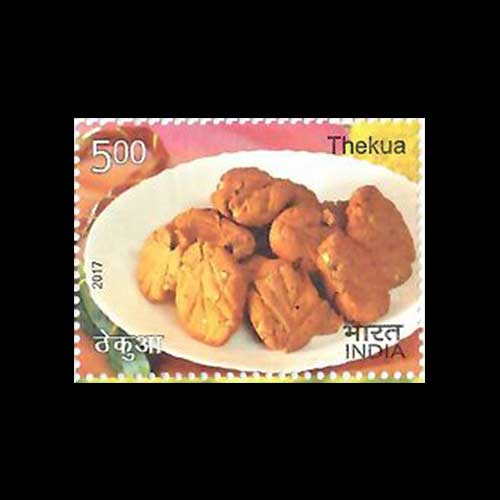Fascinating Archaeological Facts on Postage Stamps - 76
2025-07-23 Wed
Wheat is recognized as one of the most significant cereal crops globally. This crop has undergone a transformation through both natural Evolution and human intervention, evolving from its primitive form, Einkorn wheat, into prominent cultivated varieties such as bread wheat (T. aestivum L.) and durum wheat (T. turgidum L. var. durum). In India, wheat holds a distinguished position as the second most important Food crop in terms of both cultivated area and Production, particularly thriving in the Northwestern states where the vast indo-Gangetic plains provide an optimal climate for its growth. A study conducted by the Indian council of Agricultural research (ICAR) - Indian Institute of Wheat & barley Research in 2018 identified a total of 448 wheat varieties that have been officially recognized for cultivation across various agro-ecological regions of India.According to Arzani and Ashraf (2017), wheat is among the earliest species to have been domesticated, nearly 10000 years ago during the Neolithic period in the Fertile Crescent. This region, located in the MiddleEast, spans from Jordan, Palestine, and Lebanon to Syria, Turkey, Iraq, and Iran, where the wild ancestors of wheat continue to be found.
The historical significance of wheat in the Indian subcontinent is supported by both archaeological and literary evidence. Liu et al. in their publication, "The Virtues of Small Grain Size: Potential Pathways to a Distinguishing Feature of Asian Wheats" (2016), assert that wheat species were already documented in western South Asia around 5000 BCE at Mehgarh, a Neolithic archaeological site in Balochistan, #Pakistan. The cultivation of wheat gradually extended further east and south into the Indus region during the third millennium BCE and subsequently into the Ganges valley and southern India.
Notably, Indian shot wheat or dwarf wheat (T. sphaerococcum) is endemic to southern Pakistan and northwestern India. Archaeological findings from Mohenjo-Daro indicate that this particular variety was cultivated as early as 3000 BCE.
Wheat is also cited in ancient literary texts, where traditional food items prepared from wheat were prevalent, as referenced in the Rigveda, Atharvaveda, and Jatakas. Patil and Ahirrao, in their work "Origin and History of Godhuma (Wheat): An Indian Perspective" (2022), highlight that while wheat was established in ancient times, it faced challenges in acceptance, being described as an inferior grain in the Charaka Samhita and Susruta Samhita.
On 03 November 2017, India post issued a Set of 24 stamps along with 5 miniature sheets on Indian Cuisine. Six of these stamps feature Dishes where wheat is the main ingredient, including Malpua, Gujhiya, Thekua, bhature, Bati and Litti.
Latest News
-
Ghiyath Shah as Heir Apparent
2025-09-25 ThuGhiyath Shah was the ruler of the Malwa Sultanate, reigning from 1456 to 1500. From 1456 to 1469, he...
-
Malwa Sultan Mahmud Shah Silver Coins
2025-09-11 ThuMalwa Sultan Mahmud Shah minted silver coins in round and square flans. <br><br> For round coins,...
-
Malwa Sultan Mahmud Shah Billon coin
2025-08-26 TueMalwa Sultan Mahmud Shah's billon coins followed three weight standards: 100 rati, 96 rati, and 80 r...
-
Fascinating Archaeological Facts on Postage Stamps - 91
2025-08-23 SatRhinoceros is one of the oldest land mammal species existing in India. There are five species of rhi...
-
Fascinating Archaeological Facts on Postage Stamps - 90
2025-08-23 SatUthiramerur, a Village in Kanchipuram, Tamil Nadu, is notable for its Temple inscriptions that descr...

